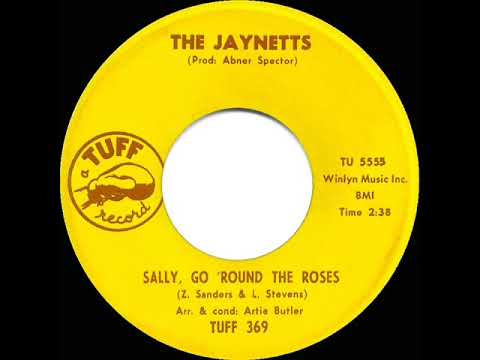In 1963, a female singing group called the Jaynetts made their only hit called "Sally Go Round the Roses." It stood out from every other girl-group song of the era because of its haunting lyric and freakish sound. Though it could be heard on every pop station in America (it peaked at No. 2 for two weeks in early September, 1963), you didn't know whether the radio station was right next door with a 50,000 watt signal, or beamed through the static of a low-wattage station a thousand miles away.
It was produced at Broadway Studios in New York by Abner Spector, no relation to Phil; Abner was an A&R man for Chicago's Chess Records. Abner Spector recorded hit singles by artists who would almost never be heard from again, notably the Corsairs ("Smoky Places"), and the Jaynetts. For many years Sally Go Round the Roses (Tuff 13), recorded at Broadway Studios in Manhattan, and released on Spector's Tuff label, a Chess subsidiary, was among the most valuable collector's items at record fairs and …
Keep reading with a 7-day free trial
Subscribe to Critical Conditions by Wayne Robins to keep reading this post and get 7 days of free access to the full post archives.



